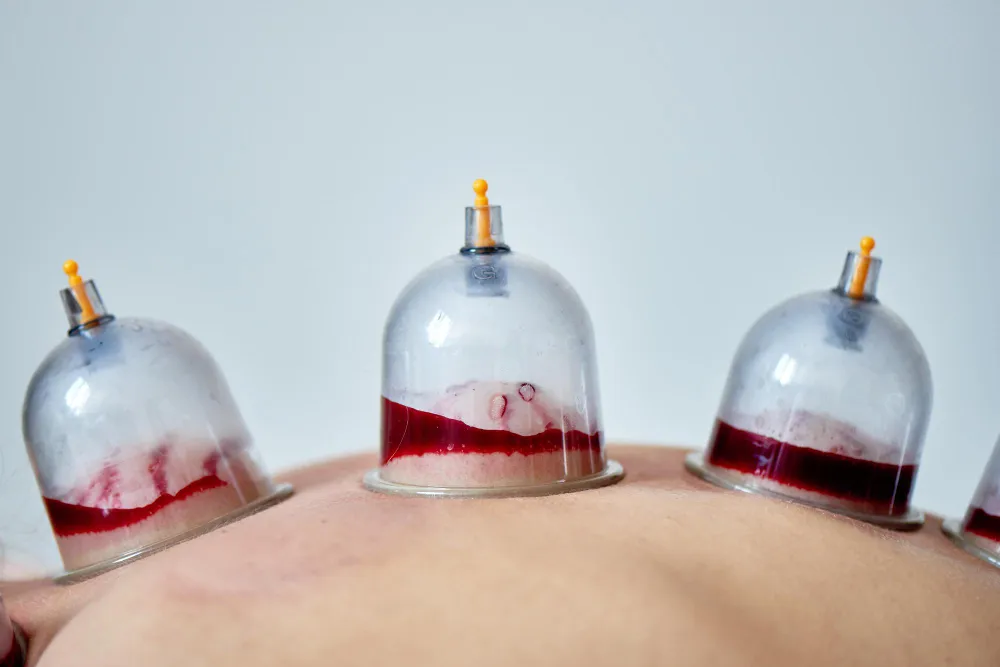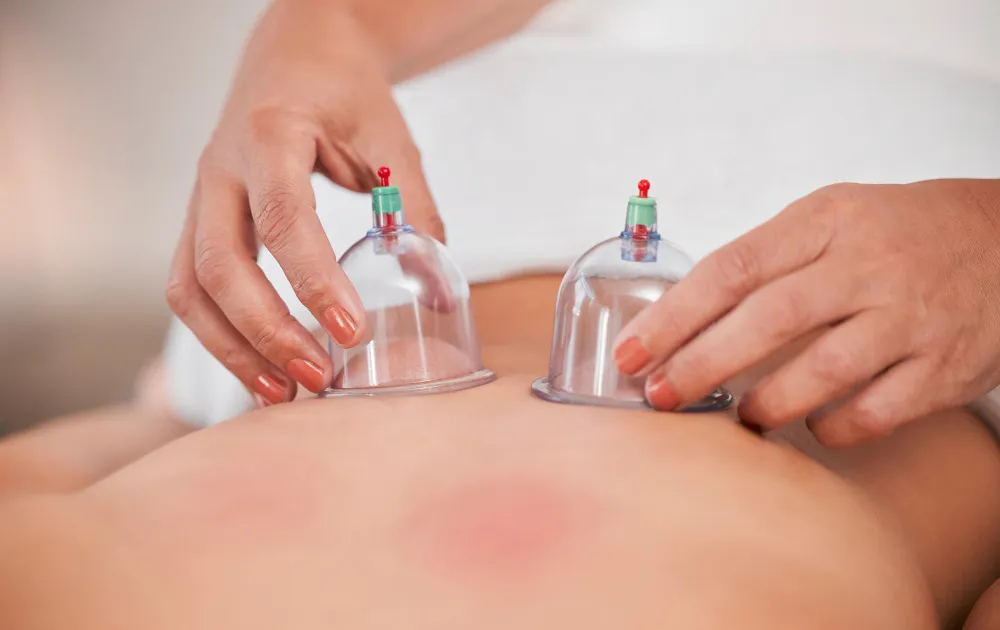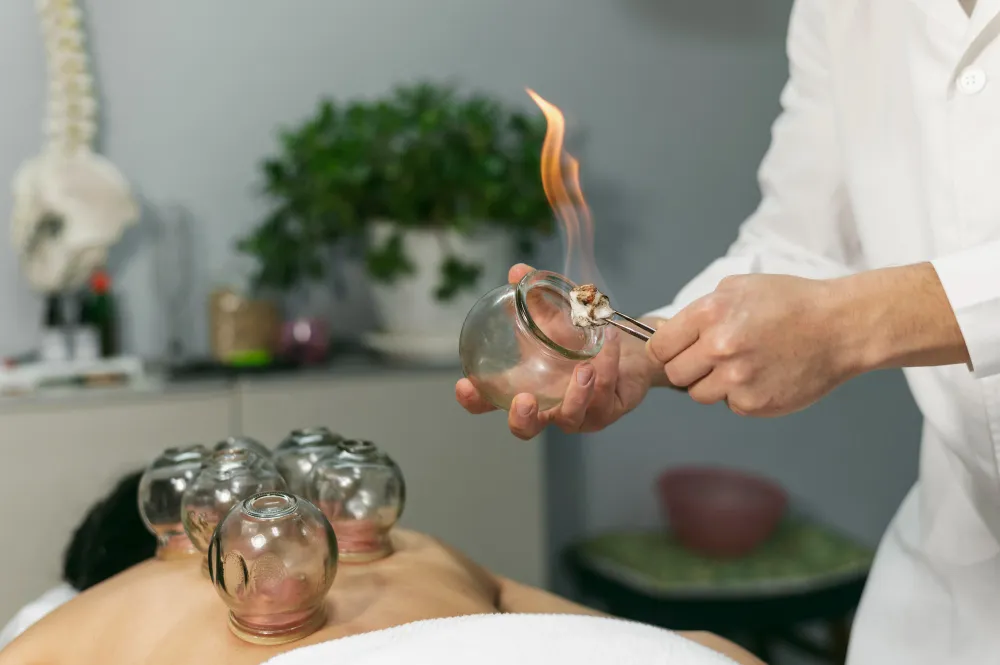Cupping therapy, also known as Hijama or Hajama, is a traditional healing practice that has been used for centuries across various cultures. Today, cupping is gaining renewed popularity in wellness circles for its potential to support pain relief, muscle recovery, and overall well-being.
But what exactly is cupping, and why are so many people exploring it?
In this article, we’ll explore how cupping therapy works, what types exist, and how individuals commonly use it to support their health — all while staying within safe and regulated practices.
What is Cupping / Hijama Therapy?
Cupping therapy involves placing special cups on the skin to create gentle suction. Practitioners believe this technique stimulates blood flow and supports the body’s natural healing responses.
Hijama is the traditional term for wet cupping, a form that involves light, superficial skin incisions followed by suction to draw out small amounts of blood. It’s commonly practiced in traditional Islamic medicine.
Types of Cupping Therapy:
Dry Cupping
Uses suction only, without incisions.

Wet Cupping (Hijama)
Combines suction with light bloodletting.

Massage Cupping
Cups are glided over oiled skin to relax muscles.

Fire cupping
Uses heated air inside the cups to create suction.

These methods are often used in clinics under the supervision of certified and licensed practitioners.
Common Benefits of Cupping Therapy
While more research is needed to fully confirm its medical effectiveness, many individuals use cupping as a supportive wellness practice. Reported benefits include:
1. Supports Circulation
The suction may help improve local blood flow in the cupped area, which some believe aids the body’s natural healing process.
2. Muscle and Joint Relief
Cupping is often used by individuals dealing with:
- Back or neck discomfort
- Muscle tightness
- Generalized stiffness
- Recovery after physical activity
3. Relaxation and Stress Support
The therapy is also valued by many for its calming effect. The sensation can promote relaxation and ease physical and emotional tension, similar to massage.
4. Traditionally Used for General Wellness
In traditional systems of medicine, Hijama is believed to help balance bodily functions and remove what was referred to as “stagnant” elements. While these beliefs are cultural and not clinically proven, they are central to its historical use.
Uses of Hijama Therapy for Women
Women commonly seek Hijama for its traditional use in:
- Easing menstrual discomfort
- Supporting well-being after childbirth
- Managing stress or fatigue
- Traditional hormonal balance approaches
Uses of Hijama for Men
Men may explore Hijama therapy to help with:
- Recovery from physical exertion or muscle fatigue
- Supporting mental focus and alertness
- Traditional detox-related practices
- Managing stress or sleep quality
Cupping Points and Session Overview
Cupping is typically applied on the back, shoulders, or specific pressure points depending on the desired outcome. Common cupping points include:
- Upper back (often used in general sessions)
- Shoulders and neck (for tension)
- Lower back (for fatigue or posture-related strain)
- Scalp or forehead (in stress-focused sessions)
Each session is customized by the therapist, following proper safety and hygiene protocols.
Possible Side Effects & Safety
Cupping is considered safe when performed by a licensed health professional, but minor side effects may occur:
- Mild bruising or circular marks (which fade over days)
- Temporary dizziness or fatigue after the session
- Local skin sensitivity
- Risk of infection (particularly in wet cupping, if not done hygienically)
You should avoid cupping if you:
- Are pregnant (unless specifically approved by a physician)
- Have a bleeding disorder
- Are on blood-thinning medications
- Have a skin infection or open wounds
Always consult your healthcare provider before beginning any new wellness treatment.
Frequently Asked Questions
Is Hijama safe for everyone?
Hijama is generally safe when performed by trained professionals. However, certain health conditions may make it unsuitable, so consult your physician first.
Is it painful?
Most people describe the feeling as mild pressure or suction. Wet cupping may involve a slight pricking sensation.
How often can you do it?
This depends on your health goals. Many people opt for sessions once every 1–3 months. Discuss frequency with a certified therapist.
Can cupping cure diseases?
Cupping is not a cure for any disease. It is used as a complementary therapy and should not replace medical treatment.
Conclusion
Many people continue to explore cupping therapy, particularly Hijama, as a supportive practice for muscle relief, stress management, and overall wellness. While it holds cultural and historical significance, individuals should always approach it safely and with realistic expectations.
If you’re interested in trying cupping therapy in Dubai, make sure to book with a licensed therapist who follows DHA-approved protocols.

Amit Saraswat is the Founder of Physioveda Medical Center, a Dubai-based clinic focused on personalized physiotherapy and integrative healthcare. With a passion for patient-centric solutions, he leads the vision behind Physioveda’s evidence-based approach to pain relief and long-term recovery.
